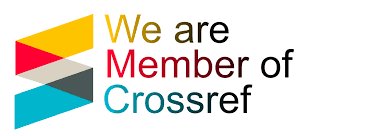INNOVATIVE TEACHING METHODS: COMPARATIVE ANALYSIS
DOI:
https://doi.org/10.63034/esr-218Keywords:
teaching methods, modern technologies, education, modern educational trends, processes in the education system.Abstract
The article deals with trends and directions of education development. New directions for the development of modern education are considered, including humanization, continuity and continuity in education. The directions of development of education in the modern world are undergoing significant changes compared to the past. This is primarily due to the constant development of technology, but this is not the only reason. Increasing the number of competent specialists is considered one of the main conditions for the development of the modern economy, because the position of each country on the world stage depends largely on the level of the economy. Thus, it can be concluded that the investment in the education system will be returned many times over. Today's society needs not only qualified, active and educated specialists, but also developed individuals with developed morals, who are ready to take responsibility for their work and make informed choices. Since scientific and technical progress does not stand still, and access to information is becoming easier, it is necessary to continuously modernize the education system.
References
Қ абдықайыров Қ ., Инновациялық технологияларды диагностикалау – А, 2015
Раджерс Э. Инновация туралы түcінік //Қ азақ стан мектебі, №4, 2011.
Манвелов С.Г. Заманауи сабақ ты жобалау. - М.: Білім, 2002 ж.
Ларина В.П., Ходырева Е.А., Окунев А.А. «Заманауи педагогикалық
технологиялар» шығармашылық зертханасының сабақтарындағы дәрістер – Киров:
– 2002 ж.
Петрусинский В.В. Ойындар – оқу, жаттығу, бос уақытты өткізу. Жаңа
мектеп, 1994 ж
Громова О.Қ . «Сыни тұрғыдан ойлау - бұл орыс тілінде қалай?»
Шығармашылық технологиясы. //БШ No12, 2001 ж
Published
How to Cite
Issue
Section
Categories
License
Copyright (c) 2024 Xamit A

This work is licensed under a Creative Commons Attribution 4.0 International License.





